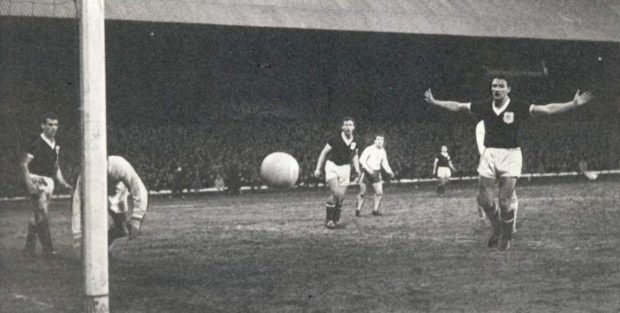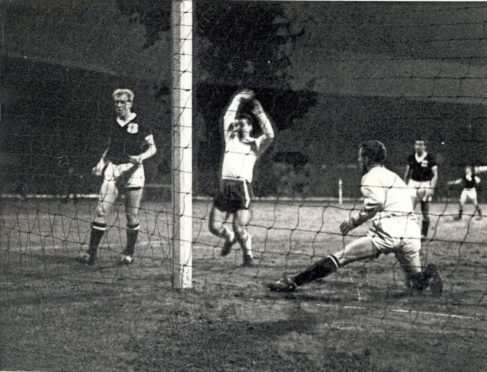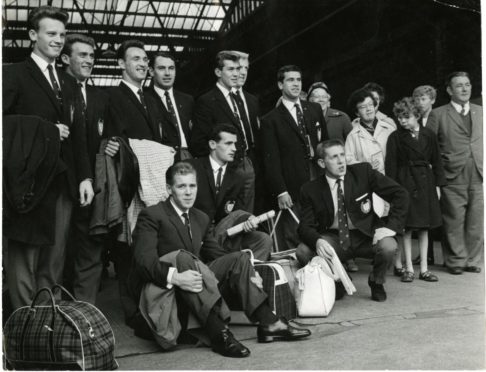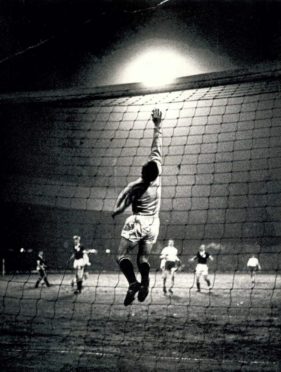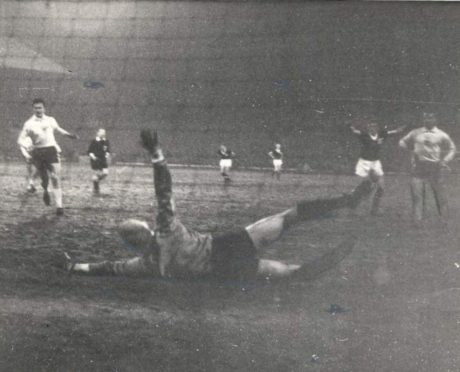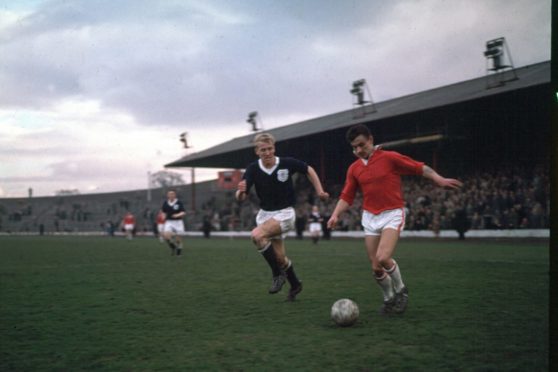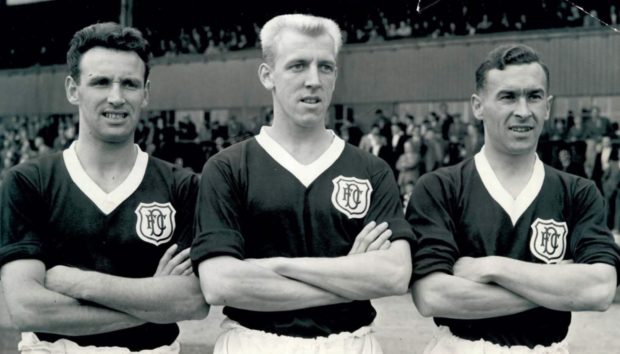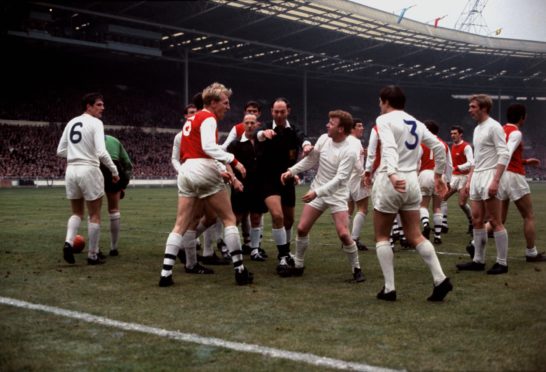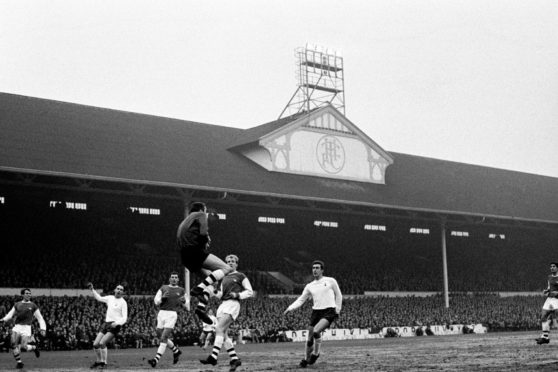On this day 58 years ago there were 40,000 spectators squeezed inside Dens Park as Bob Shankly’s Dundee booked their place in the European Cup semi-finals.
Their opponents were an Anderlecht side who had already seen off the mighty Real Madrid in the early stages of the tournament, but had been humbled at Heisel by a rampant Dark Blues.
Real had been in six of seven finals to that point, winning five, and still boasted the likes of Alfredo Di Stefano and Ferenc Puskas. Beating them had elevated the Belgians to the status of favourites for the entire competition.
However, goals from Alan Gilzean (2), Alan Cousin and Andy Penman saw the Anderlecht crowd applaud Dundee from the pitch in the first leg.
“The first leg away in Belgium was the best we ever played,” recalls Ian Ure, centre-back as Dundee won their only league title to date in 1962 and roared their way past Anderlecht in ’63.
“Certainly in Europe anyway. We murdered them that day.
“It ended 4-1 but could easily have been more. I always remember coming off at the Heisel Stadium and the home crowd clapped us off.
“It really was emotional, I can tell you.
‘Dens Park was jumping’
“Anderlecht were strongly fancied, not just to beat us but to win the whole thing. They had beaten Real Madrid in an earlier round and were a powerful team with some great players.
“A lot of these things get forgotten about in the mists of time but those days were unforgettable.
“I remember the home leg at Dens Park having 38,000 in the stands – I think they were breaking the rules a bit!
“I’m pretty sure the park was only supposed to have around 18,000 capacity.
“Dens was jumping. It was wonderful to play in front of.”
Arrival of Bob Shankly
Ure joined the Dark Blues in 1958 while Willie Thornton was manager. Thornton’s reign would last until September 1959 and the arrival of Shankly.
Dundee had finished fourth in the league the season before as they looked to relive the success of the early 50s under George Anderson, winner of two League Cups and a Scottish Cup runner-up.
Shankly was the man given the task of inspiring them after moving to Dens from Third Lanark.
“I had just been playing local youth football in Ayr and had come up for a trial,” says 81-year-old Ure.
“I signed but a year or so later Thornton got the bullet and in came Shankly.
“He revolutionised the team. We were quite an ordinary team when he arrived and he transformed us.
“I don’t think Bob Shankly gets enough praise for the amazing job he did at Dundee. It was phenomenal.
“The squad was great, a really great bunch of boys and we had some right laughs and carry-ons. It was a really good mix of types and Bob Shankly did a great job building that team.
“He brought in some of the older guys like Bobby Seith, Bobby Wishart and Gordon Smith.
“We had old guys at the end of their careers but with young players as well, we had the blend of younger legs and older heads and we all seemed to gel.
“I’m so glad I had the opportunity to play in that team.”
AC Milan in the last four
The European run would go on beyond Anderlecht, with giants AC Milan waiting in the last four.
Dundee came from behind at a muddy Dens Park to win the second leg against the Belgians 2-1 thanks to Cousin and a Smith gem before they set their sights on the Italians.
The Rossoneri had been Serie A champions four times in the previous eight years and had the likes of Giovanni Trapattoni, Cesare Maldini, Gianni Rivera and Jose Altafini in their ranks.
Dundee’s hopes of going all the way were dashed in the first leg at the San Siro with 73,933 watching on.
Cousin levelled matters in the first half after the Dark Blues fell behind, heading in an Andy Penman cross.
But doubles from wingers Paolo Barison and Bruno Mora saw the home side romp to a 5-1 victory.
‘The ref wasn’t with us’
In front of another huge Dens crowd, the Dark Blues won the return leg thanks to a Gilzean header.
The legendary striker would later be sent off for reacting to yet more harsh treatment from the Italians.
And Ure insists the final result would have been different with a bit more protection from Belgian referee Lucien van Nufell.
“It was just those few minutes after the interval in the San Siro where the clinical Italian finishing did for us,” he added.
“It was all near post and flick it in, bang, bang, bang.
“We beat them at Dens, gave them a good hiding but it ended 1-0. If the referee had done his job…
“I remember Gordon Smith getting chinned in the box by a Milan defender early in the game after we had made it 1-0.
“If the referee caught that I think they would have been in trouble.
“The ref wasn’t with us, though, I have to say. The Italians were cynical and just kicked us.
“It was a fantastic achievement to win the league and get to that stage, though.”
‘Fairytale stuff’
Milan would go on and beat Eusebio’s Benfica in the Wembley final to lift the first of their seven European Cups.
Ure would move on to Arsenal in 1963, where he added three more international caps to the eight he won while at Dundee.
Later he’d arrive at Manchester United to play alongside Denis Law, Bobby Charlton and George Best for a short time under the management of Matt Busby.
However, he looks back most fondly on his time in Dundee and says it was only the pull of football ambition that dragged him away from the city.
“I had moved up straight from school down in Ayrshire and it was a smashing atmosphere in the city,” he added.
“Everyone in the city was delighted – apart from Dundee United fans of course! There’s always that rivalry.
“But it was a great time to be young and in Dundee in those days.
“I was delighted to be living in the city at that time and I was sorry to leave. But I had the opportunity to go to test myself down south at Arsenal so I went.
“They were great days, really wonderful days. It was fairytale stuff being there at that time.
“Dundee was a relatively small club, it was a miracle what we did.”
